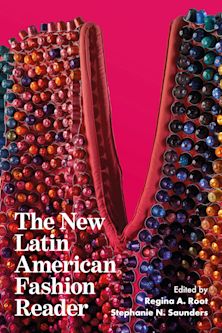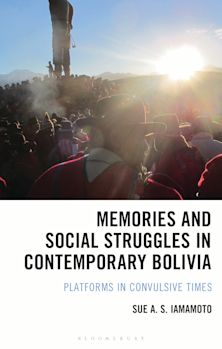- Home
- ACADEMIC
- History
- Latin American History
- Favela Media Activism
Favela Media Activism
Counterpublics for Human Rights in Brazil
Favela Media Activism
Counterpublics for Human Rights in Brazil
You must sign in to add this item to your wishlist. Please sign in or create an account
Description
What explains the engagement of low-income young people in media initiatives for political mobilization and social change in everyday life? Favela Media Activism: Counterpublics for Human Rights in Brazil responds to this question using an in-depth ethnographic and interdisciplinary study about the trajectories in media activism among young residents of low-income and violence-ridden favelas in socially unequal Rio de Janeiro. Leonardo Custódio provides multifaceted analyses of how favela youth engage in individual and collective media activist initiatives despite social class constraints and neoliberal imperatives in their everyday life. This book details processes experienced by young favela residents while becoming individuals who act to challenge and change patterns of discrimination, governmental neglect and drug-related violence. It is an important resource for scholars interested in the nuances of political engagement among marginalized youth in today’s world of hyper-connectivity, information abundance, and the persistence of racial and social inequalities.
Table of Contents
Acknowledgements
Chapter 1. The Scholarly Relevance of Media Activism by Low-Income Youth
Chapter 2. Ethnography as a Local Outsider: Dilemmas and Decisions in the Research Process
Chapter 3. Luta: Everyday Life Struggles in Favelas
Chapter 4. The Meaning of Favela Media Activism
Chapter 5. Favela Media Activism and the Formation of Counterpublics
Chapter 6. The Relationship between NGO Work and Favela Media Activism
Chapter 7. Agency, Structure and Interaction: Elements that Shape Favela Media Activism
Chapter 8. Nuances between Coping and Change: Trajectories to Favela Media Activism
Chapter 9. Research Outcomes: Findings, Lessons and Interdisciplinary Contributions
Afterword
Appendix 1: Details about NGO Staff Interviews
Appendix 2: Details about Interviewees Involved in Media Activism
Bibliography
About the Author
Product details
| Published | 24 Jul 2017 |
|---|---|
| Format | Ebook (Epub & Mobi) |
| Edition | 1st |
| Extent | 236 |
| ISBN | 9781498530002 |
| Imprint | Lexington Books |
| Illustrations | 3 b/w illustrations; 2 tables; |
| Publisher | Bloomsbury Publishing |
About the contributors
Reviews
-
Favela Media Activismis an important contribution to our understanding of activismin Rio and the role of media in it, skilfully covers a number of theoretical literatures, and engages well with the Portuguese language scholarship – which is not always the case in English language books. It is recommended for graduate students of media, activism and civil society, and academics with interests in media activism in Latin America and beyond.
European Journal of Cultural and Political Sociology
-
This book is a refreshingly original contribution to our understanding of communication for social change. It highlights the complex relationships between context and communication, theory and practice, the challenges faced by favela media activism informed by acute observations of structures, the nature of marginality, the exercise of dominance, and the power and creativity of counterpublics to create communication environments of their choice.
Pradip Ninan Thomas, University of Queensland
-
Leonardo Custódio’s Favela Media Activism is an in-depth study of media use, everyday life, and political agency. Custódio’s research embraces the complexities of political action, exploring diverse individual personal histories, mainstream media, on-line and off-line media practices, and media pedagogies. His approach is laudable for the ways it emphasizes the multiplicity and complexity of social processes of change without fragmenting social reality into isolated segments.
Clemencia Rodríguez, Temple University

ONLINE RESOURCES
Bloomsbury Collections
This book is available on Bloomsbury Collections where your library has access.



































